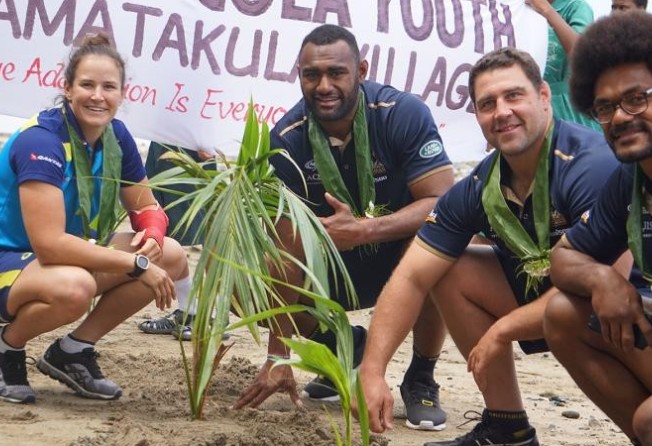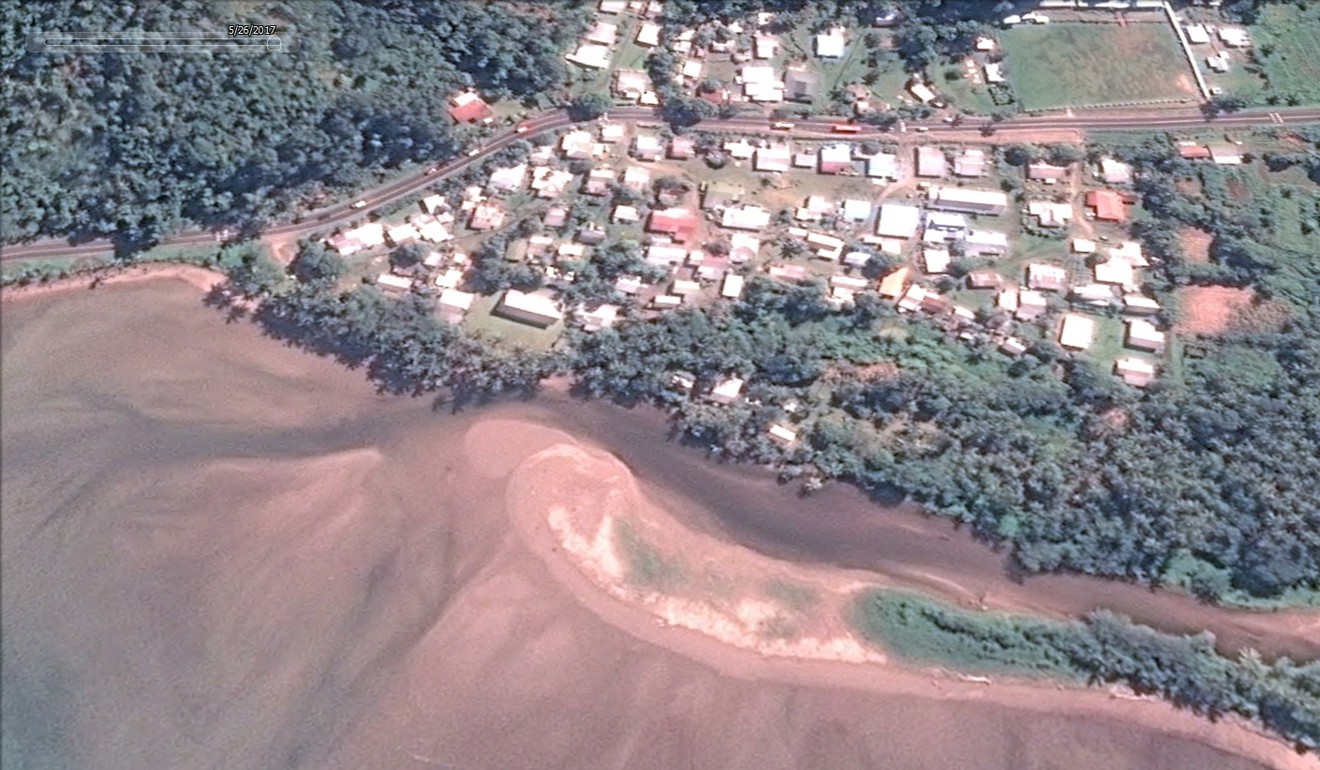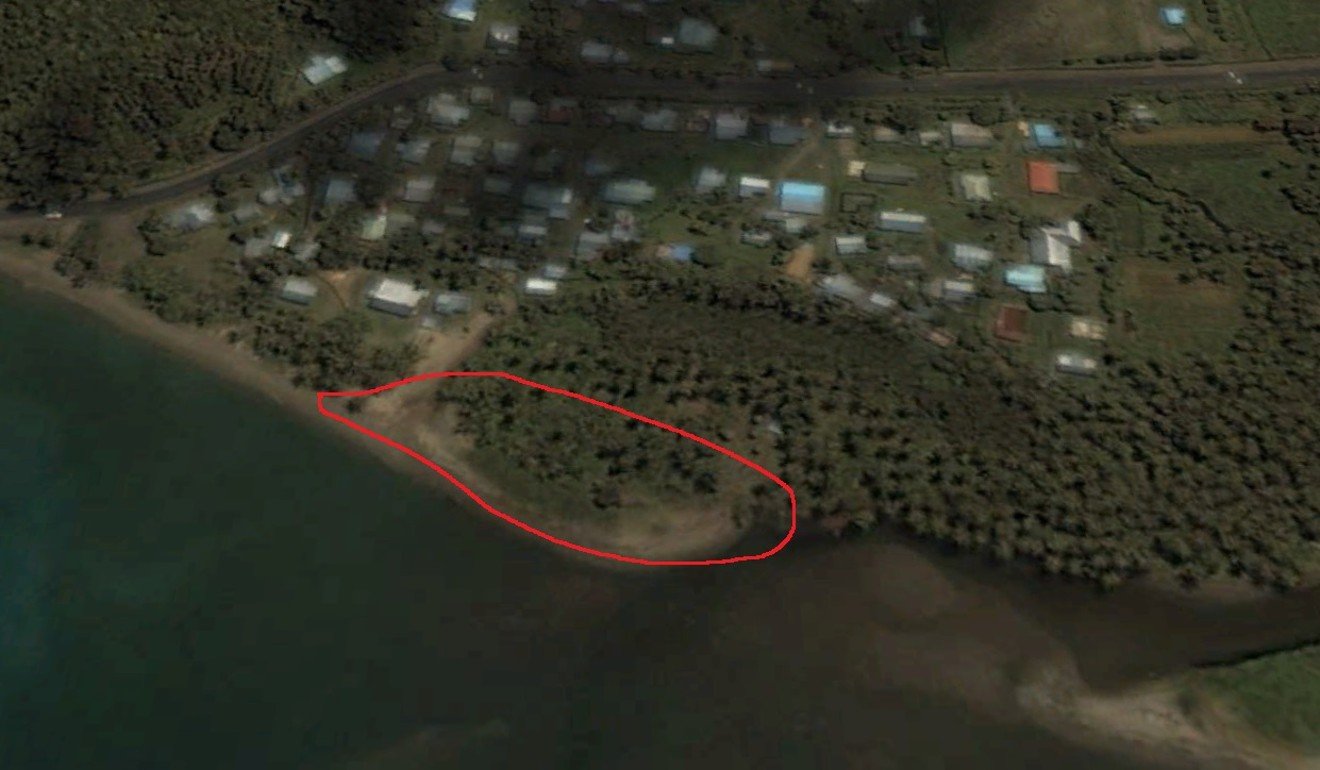Climate change: Fiji beaches where rugby sevens stars are groomed are being lost to the sea
- Noa Nadruku and the Kuridrani brothers learned to play at Namatakula beach
- Samuel Kuridrani is leading a mangrove-planting effort to recover the land

It was a move straight from the beaches of Namatakula in Fiji as Noa Nadruku swept the ball from between his legs to Tomasi Cama against New Zealand in the 1990 Hong Kong Sevens final.
Nadruku received a one-handed flick-on pass from Fiji legend Waisale Serevi and bamboozled the All Blacks defence by passing the ball from between his legs to Cama, who ran 70 metres to score one of the greatest tries ever seen in the sevens game.
Sadly, if climate change and sea-level rise has its way, the Namatakula beaches where Nadruku’s skills were honed may one day also become just a memory.
Watch Fiji’s famous 1990 try against New Zealand
The sea is starting to claim the land and the beaches where some of Fiji’s best rugby players are groomed.
“I returned from Australia to see that where we had played when we were younger was no longer there because the waves had taken over,” said Samuel Kuridrani, an environmental activist and brother of Australian international Tevita and Fiji player Chris – all of whom were brought up in the villages of Namatakula. “It’s made me want to make a move to save our community.”
The village around Namatakula is home to more than 2,500 inhabitants but has produced some of best rugby players in Fiji, including Nemani Nadolo, the Kuridrani brothers, Nadruku and former Australia and Fiji international Lote Tuqiri.
According to UN Environment, climate change is a major factor in the gradual disappearance of the Namatakula beaches and the Coral Coast.

“Crashing waves and rising sea levels have begun to slowly eat away the traditional training grounds of the Fijian rugby player,” UN Environment said in a report. “More and more kids in Namatakula and elsewhere are forced to play [rugby] inland, often in bare feet on rough, dusty and unwelcoming terrain.”
Dr Shaw Mead, managing director of consultancy eCoast, a New Zealand-based marine and freshwater company with a regional office in Nadi, has been studying the coastlines of the South Pacific for more than two decades. He said environmental concerns exists throughout the region.
“All over the South Pacific there are definitely concerns, especially where people are living,” said Shaw. “For sure, climate change is part of the problem, but there are a whole bunch of other issues.
“A lot of it is the land use and the pressure put on reefs. And other impacts like coral bleaching, which can be linked to climate change.

“The thing with the coral islands and the way they work in terms of the beaches, is that sand mostly comes from having a nice healthy reef. With lots of fish and animals grazing on the reef, and algae, they help to make sand.
“A lot of the erosion problems are determined by issues of land use, along with overfishing and inappropriate coastal engineering. So if you are flushing a lot of suspended sediment over the reef, that destroys the sand engines. So there’s a whole lot of pressures put on our coral reefs.”
Shaw said Google Earth images going back to 2002 show significant changes to the South Pacific coastline, though he praised the Fijian government for taking action to combat the threat.

“It is really important the way Fiji has embraced climate change and looking at doing something about it,” he said. “Sea-level rise is not going to stop but at least it is being acknowledged and addressed now.
“Throughout the South Pacific, there is a real focus on the development of adaptive management plans to respond to the future impacts of sea-level rise.
“I guess on the positive side, Fiji is in a much better position than many other areas in the South Pacific because they are very high islands and we can expect Fiji to become a refugee area for other South Pacific Nations as sea-level rise continues and accelerates.”
Shaw said the rehabilitation of mangroves along the shore is one way of claiming back the land, although it is viable only in areas where the land is not too exposed so that plants can grow.
And that is exactly what the likes of Kuridrani is doing in an attempt to save the beaches of Namatakula.

His Kai Ni Cola foundation has started a major, self-funded mangrove restoration project and the community has planted more than 300 trees along the Namatakula shoreline.
“All we can do here in the Pacific is to adapt,” he said.
To ensure that developing countries are ready to face the transformative effects of climate change, UN Environment and UN Development Programme are helping governments integrate a range of adaptation strategies into national development plans through the National Adaptation Plan Global Support Programme.